Onward to the Super Bowl! Fly Eagles Fly!

Greetings fellow astronomers! I look forward to a fun-filled semester blogging with you all!
Below is a picture of me (the left), my brother, and our friends when we visited New York City!


We all know light travels fast, but do you know how fast it can be? The answer 299,792 kilometers in a second. The fact is, if you can travel as fast as light, you could go around the Earth seven and a half times in just one second. Theoretically, there is nothing runs faster than light.
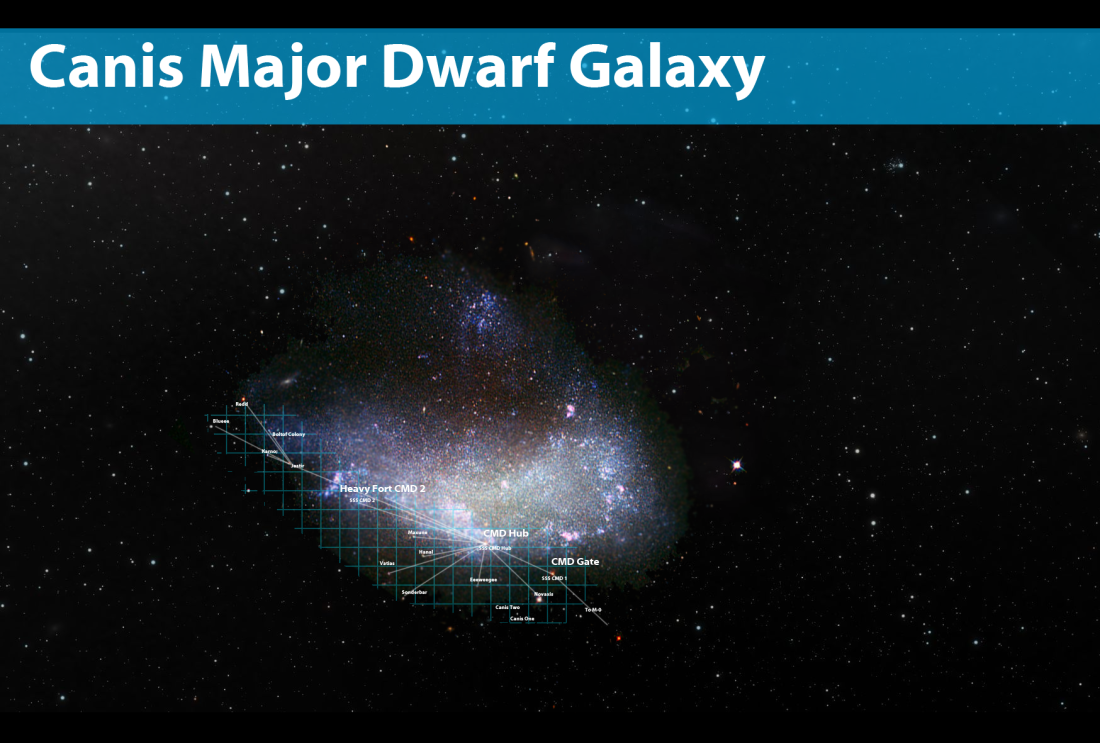
From the universal perspective, it is hard to use normal distance unit to measure the distance between stars or galaxies. Therefore we use the light travel distance to represent it. The special unit is light-year – the distance a light can travel in a year. Even though the light runs fast enough, it still takes a long time for light to travel between galaxies. For example, the distance between our Milky Way Galaxy and its closest galaxy – Canis Major Dwarf Galaxy is about 42,000 light-years. It means light need to run 42,000 years without any rest from our sun to Canis Major Dwarf Galaxy!
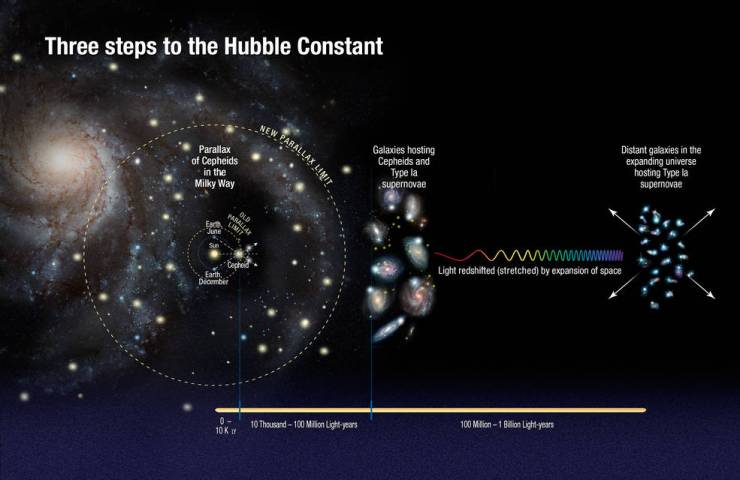
The universe is expanding faster than was originally expected. Just recently, NASA has adjusted the Hubble constant to 45.5 miles per second per megaparsec. This translates into a doubling of the size of the universe in 9.8 billion ears. AHHHH crazy! This adjustments is to correct for the increase in speed that the universe is actually expanding at. This necessary adjustment raises many questions about space regarding what is in it and other theories of physics. It has already been established that the presence of dark matter is already a mysterious aspect of the universe that is yet to be completely understood. This existence effects gravity and the way that everything in the universe is moving in comparison to each other, but the fact the the universe is expanding at such a fast speed, it raises questions as to how much the existence of dark matter and everything that goes along with it actually effect the universe, especially without us even knowing it. Dark matter controls the gravity of the universe and the inner workings of it, but we still do not know enough about it.
The fact that the universe is expanding at such a fast rate just makes me feel small. Clearly there are higher powers that science cannot understand quite yet, but even as the quest to understand it is way on its way, the universe continues to do its own thing leading to more questions than answers.
Source: NASA
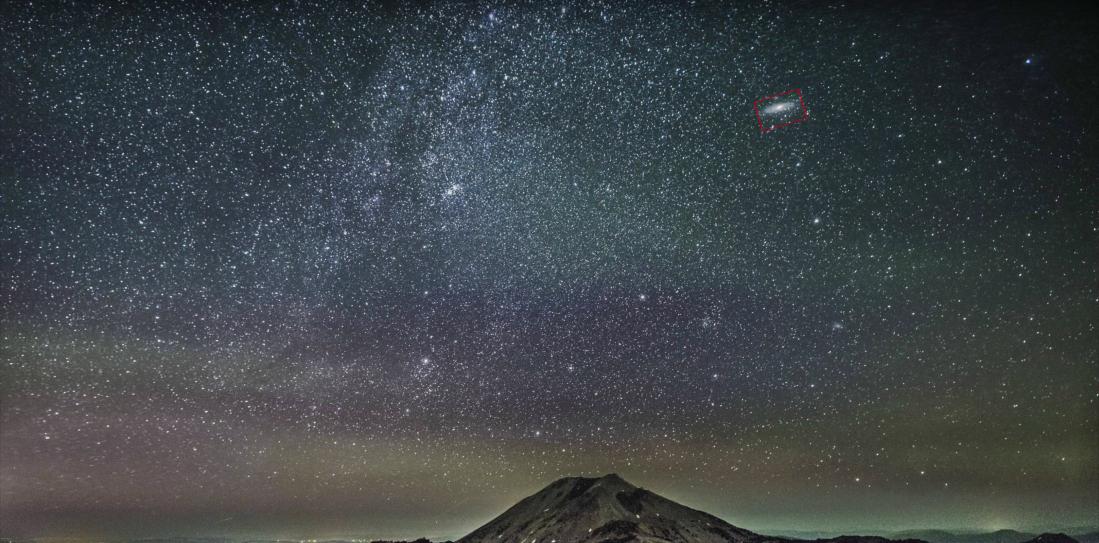
In 2015, Hubble was able to take the most detailed image of Andromeda ever taken. The image had a pixel density of 69.536×22,230 pixels. The picture was taken using 7398 exposures. Images like this really put into light how vast the universe is. In the video, they focus in on a shot of the Andromeda galaxy that is about 61,000 light years across. In that tiny distance, we are able to see over 100 million stars alone. Take into account that the image taken was only a portion of the galaxy alone and that alone is astonishing. But then you look at our night sky overall and the Andromeda galaxy just takes up a small portion of it. Images like these really blow our minds because Andromeda is a relatively close galaxy – only 2.5 million light years away. We were able to see so much of the matter inside this galaxy, but there’s actually billions of more galaxies like these that are hundreds of millions, even billions of light years away. This just gives us a perspective as to how small we are and how vast the universe is. One of my favorite quotes of all time is by Carl Sagan. A picture of Earth was taken in 1990 by Voyager 1 over 6 billion kilometers away. Upon seeing this, Sagan said “We succeeded in taking that picture, and, if you look at it, you see a dot. That’s here. That’s home. That’s us. On it, everyone you ever heard of, every human being who ever lived, lived out their lives. The aggregate of all our joys and sufferings, thousands of confident religions, ideologies and economic doctrines, every hunter and forager, every hero and coward, every creator and destroyer of civilizations, every king and peasant, every young couple in love, every hopeful child, every mother and father, every inventor and explorer, every teacher of morals, every corrupt politician, every superstar, every supreme leader, every saint and sinner in the history of our species, lived there on a mote of dust, suspended in a sunbeam”.
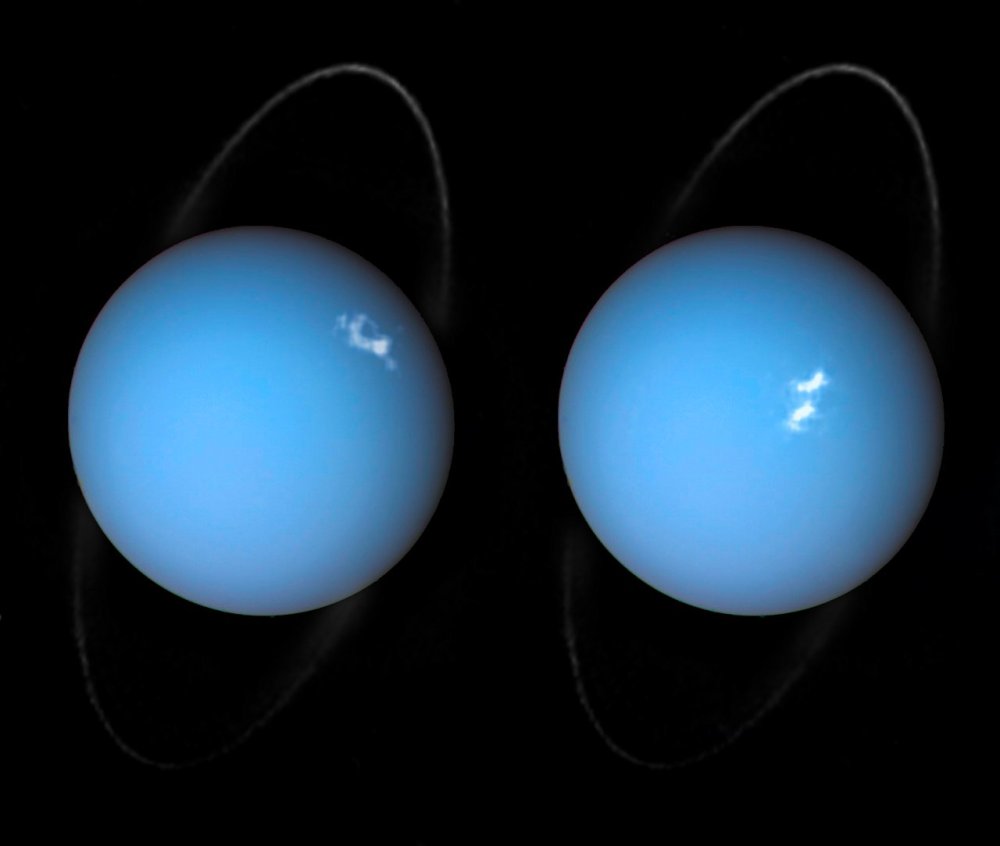
This is Uranus, my favorite planet and the “ruler” of my astrological sign, Aquarius! Uranus is the 6th planet from the sun and one of the largest of our solar system, a cold, icy planet with peculiar rings that ushers the observer away from the inner planets into the farther regions of the solar system. Just like many of our beloved constellations, this planet is named after a Greek mythological figure, Ouranos (the heavens), who was the grandfather of Zeus and original companion to Gaia, our mother earth. However, unlike the constellations on which the Greeks bestowed their stories, permanently fixing names such as Orion and Cassiopeia into our skies, Uranus was not named by the Greeks. In fact, it was not even known to them. Uranus remained unknown to humans until the late 18th century when it was discovered by the German-British astronomer William Herschel. Uranus was never discovered before the modern age because it is so distant from the sun, orbiting at about 20 AU. In contrast, Saturn, the 6th planet from the sun, is only about 10 AU away. It took the advances of modern technology, which created powerful telescopes which the Greeks would have envied, to find this distant planet (check out a neat time-line of the development of modern telescopes here. They look amazing!).
Because of this modernity, Uranus’ association with the astrological sign of Aquarius is a modern development for the ancient practice. In pre-modern times, Saturn was the planet which ruled the sign of the water-bearer, and many astrologers still associate this ancient planet with Aquarius, even though Uranus has largely taken over the role. Physically, Uranus matches characteristics of what astrologers thought described Aquarians: It’s expansive and the position of its rings makes it look unique and creative, but it’s also cold and distant. The change from Saturn to Uranus shows how modern astrologers have tried to adapt to scientific discoveries in the heavens, a flexibility which seems natural compared to the ease at which other ancient ways of thought have approached the multitude of life-changing and extraordinary modern discoveries of science. Uranus was always there, it was just waiting to be discovered! Thank you William Herschel for discovering this beautiful member of our solar system and paving the way to discover the other outer planets!
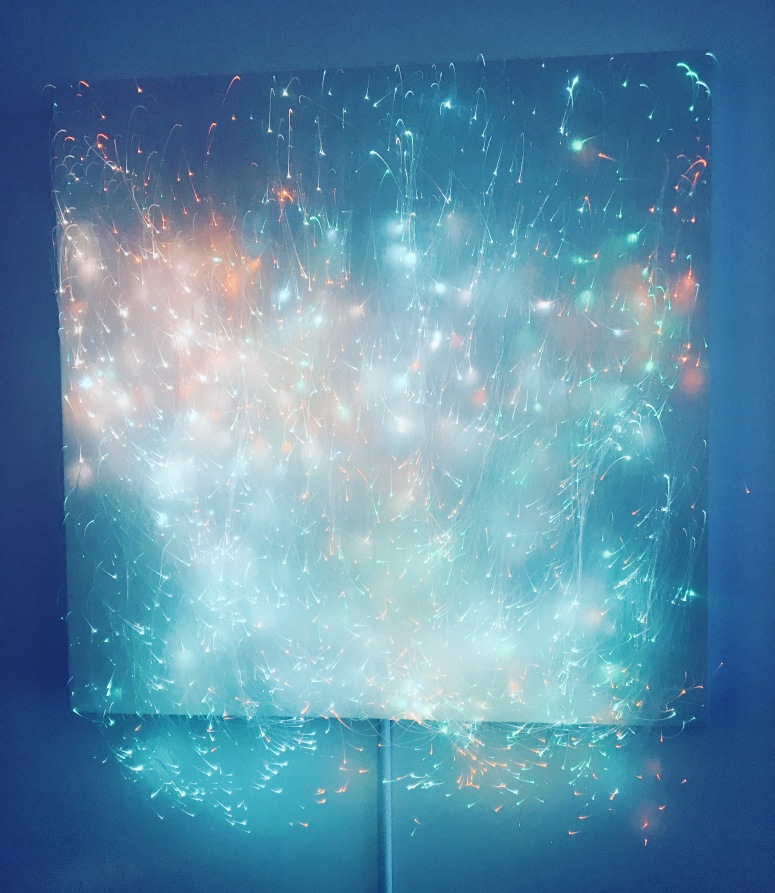 Hello there fellow astronomers, I’m doing the trial run for now. Got to practice in a simulation, before you go into space right? Pictured here is actually a piece of art that reminds me of the stars, just thought I would share it since I took it. They twinkle just like the stars do too, or how the stars did like billions of years ago because we are actually looking at the past. Still shocks me every time I think about it. Anyways, welcome to my blog. Hope you stay for a couple light years.
Hello there fellow astronomers, I’m doing the trial run for now. Got to practice in a simulation, before you go into space right? Pictured here is actually a piece of art that reminds me of the stars, just thought I would share it since I took it. They twinkle just like the stars do too, or how the stars did like billions of years ago because we are actually looking at the past. Still shocks me every time I think about it. Anyways, welcome to my blog. Hope you stay for a couple light years.

Hi! My name is Kathryn K. I’m a senior at Vanderbilt University who is double majoring in Anthropology and Political science. I love human behavior, but I also happen to love animal behavior – like that of my own dog, Mickey, pictured above in a Santa outfit. Mickey is my only pet, and he is a perfectly precious Cavalier King Charles Spaniel! Cavalier’s happen to also be my favorite dog breed, which you can read more about here if you have any interest! Hope you enjoy my blog!

Surprisingly, our galaxy, Milky Way is expected to have a collision with another galaxy, called Andromeda. Even though the universe is expanding at every moment since its creation, the 2 galaxies, Milky Way and Andromeda are coming close to each other with an anticipated collision in about 4 billion years. Both galaxies are located close enough distance to overcome the expansion of the universe; thus, their gravity is pulling each other resulting in this collision.
There are several consequences to this galactic collision. There are 2 types of collisions that can happen: One is stellar collision, which is that stars in each galaxy collide with each other and the other one is black hole collision, which is the collision of huge black holes in Andromeda and Milky Way. However, the probability for stellar collision to happen during this galactic collision is very low because the stars are distanced far enough to make it hardly susceptible to a stellar collision. In contrast with stellar collision, black hole collision is more likely to happen because the black holes in Milky Way and Andromeda have huge gravity force to pull not only each other, but also surrounding objects such as stars and planets.
Another surprising fact about the fate of our solar system during this collision is that due to rapid orbiting of galaxies in the process of the collision, our solar system might be affected and moved farther away from the center of the merged galaxy, or it might be cast out of the galaxy.
Even though the galaxies won’t collide in the imminent future, it is very interesting to look at the simulation of the galactic collision along with other aftermaths because it opens many possibilities that can happen in our galaxy. As a conclusion, we humans might need to start thinking of a way to prepare ourselves for this collision in the distant future.
Source: Wikipedia